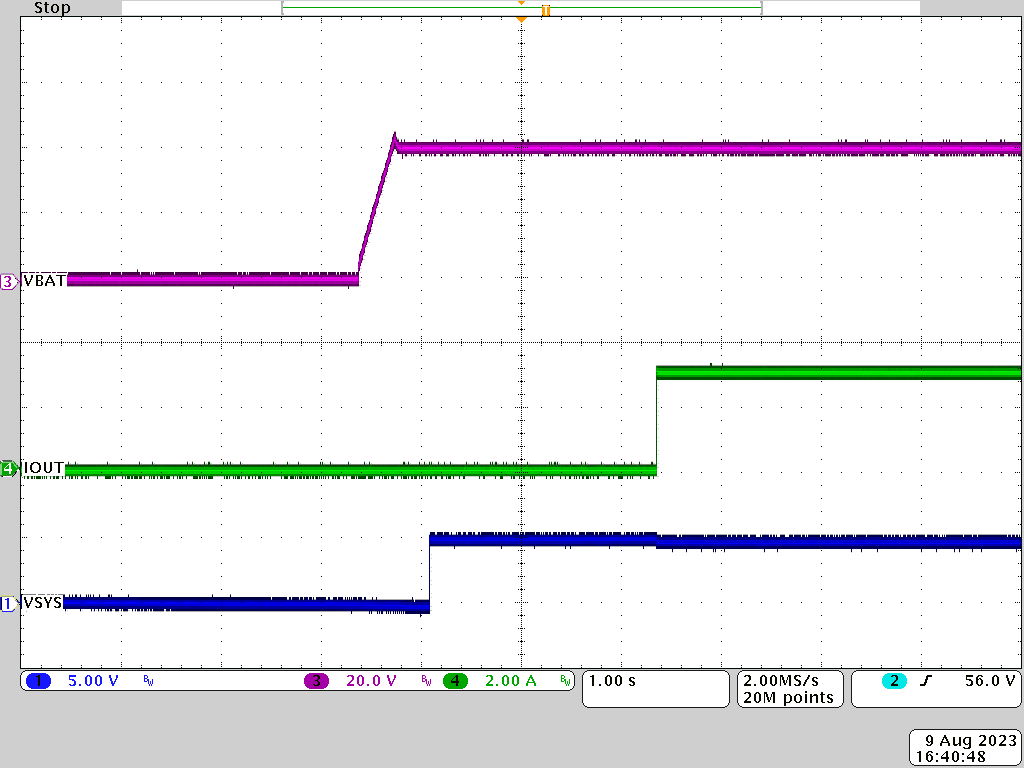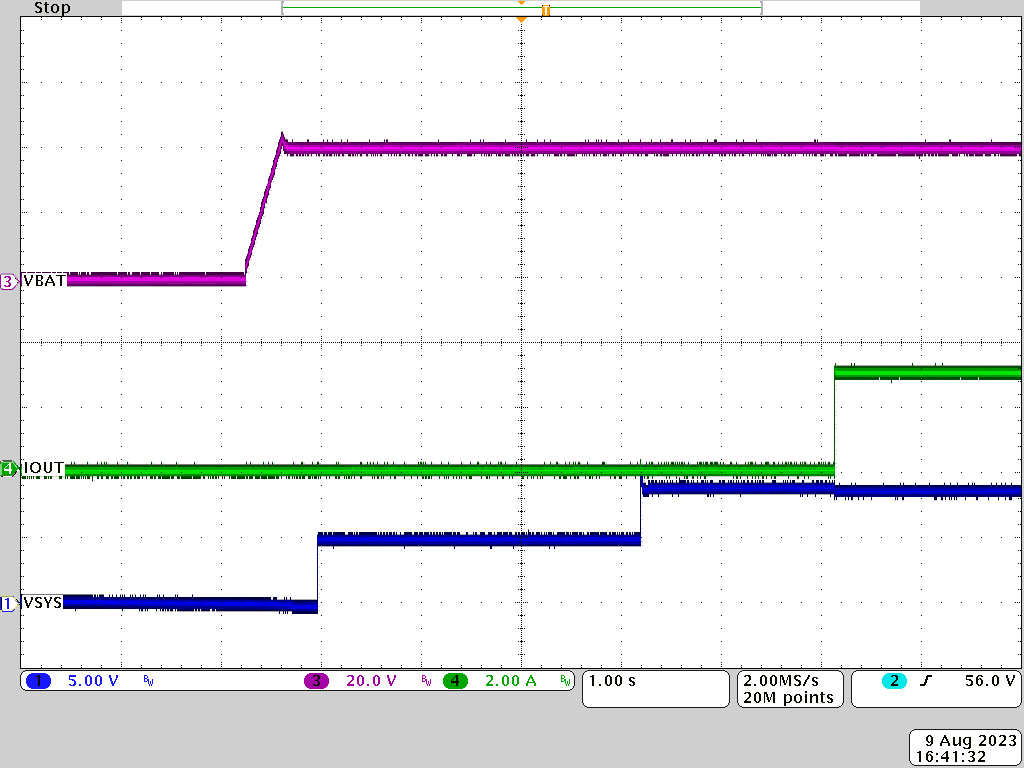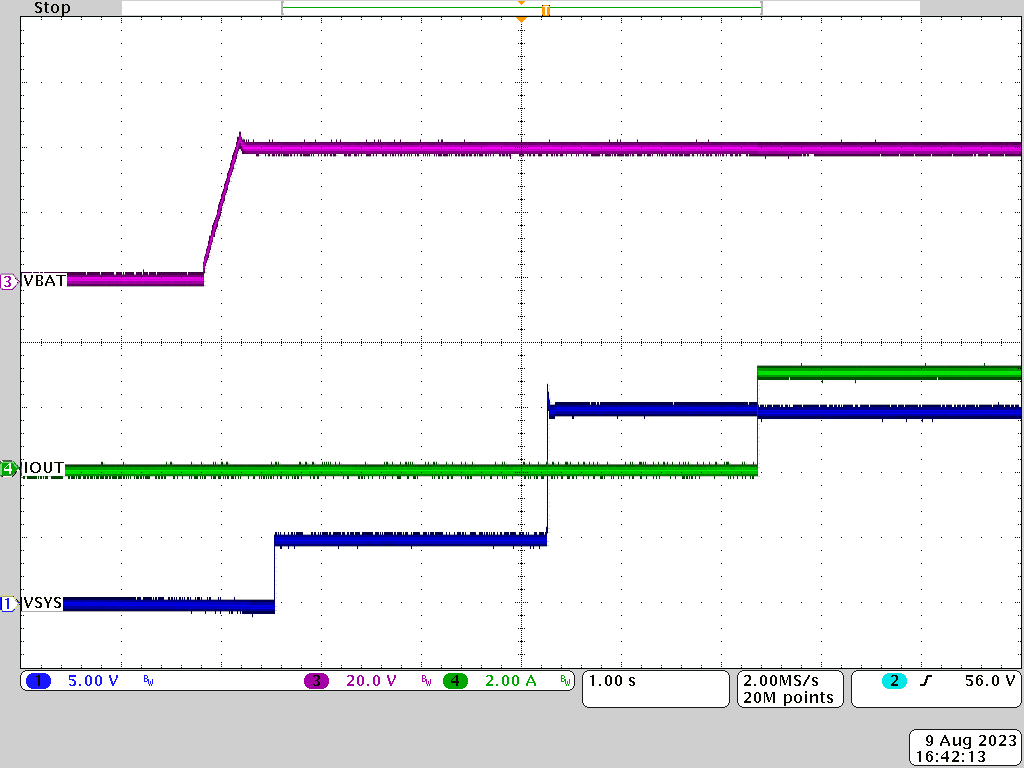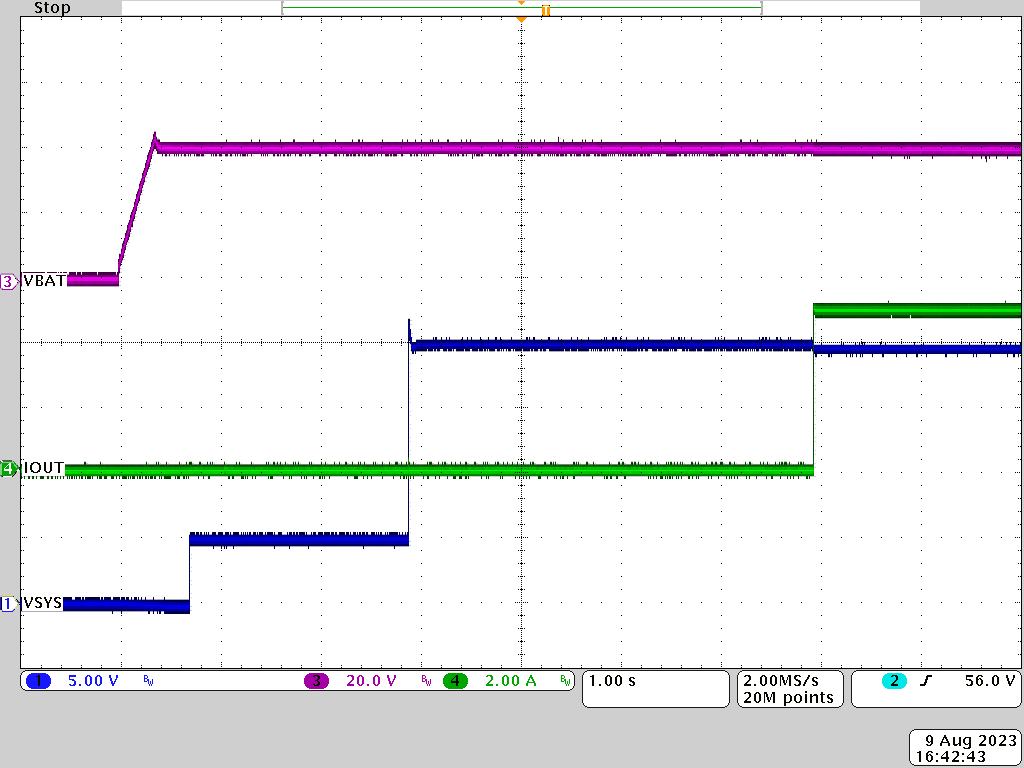TIDT349 January 2024
- 1
- Description
- Features
- Applications
- 1Test Prerequisites
- 2Testing and Results
-
3Waveforms
- 3.1 Charge Mode Start-Up Waveform
- 3.2 OTG Mode Start-Up Waveform
- 3.3 Voltage Transition at OTG Mode
- 3.4 Ripple and Noise at OTG Mode
- 3.5 Load Transients at OTG Mode
- 3.6 Switching Waveform
- 3.7 Overcurrent Protection at OTG Mode
- 3.8 Short-Circuit Protection at OTG Mode
- 3.9 Short-Circuit Protection at Charge Mode
3.2 OTG Mode Start-Up Waveform
Figure 3-5 through Figure 3-8 show the OTG mode start-up waveforms at different input source voltages.
 Figure 3-5 40Vbat, Start-Up at 5V Input Source
Figure 3-5 40Vbat, Start-Up at 5V Input Source Figure 3-6 OTG, 40Vbat, Start-Up at 9V Input Source
Figure 3-6 OTG, 40Vbat, Start-Up at 9V Input Source Figure 3-7 OTG, 40Vbat, Start-Up at 15V Input Source
Figure 3-7 OTG, 40Vbat, Start-Up at 15V Input Source Figure 3-8 OTG, 40Vbat, Start-Up at 20V Input Source
Figure 3-8 OTG, 40Vbat, Start-Up at 20V Input Source